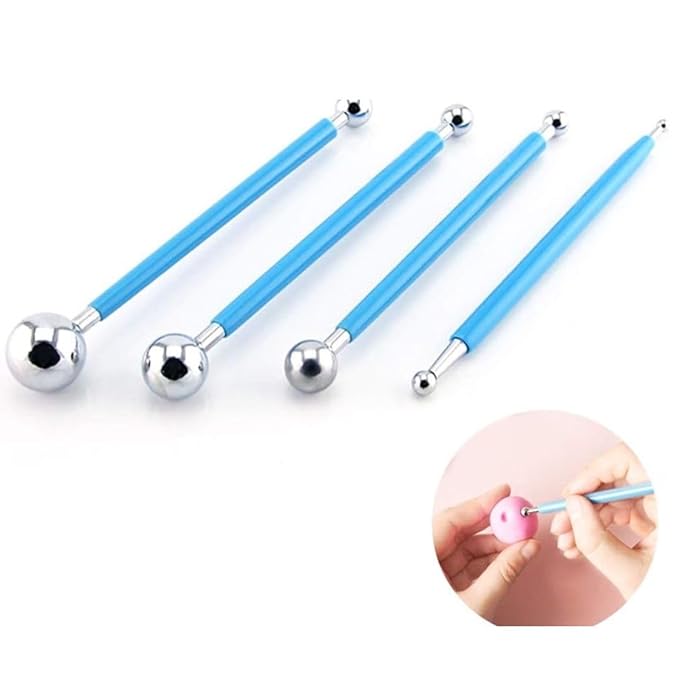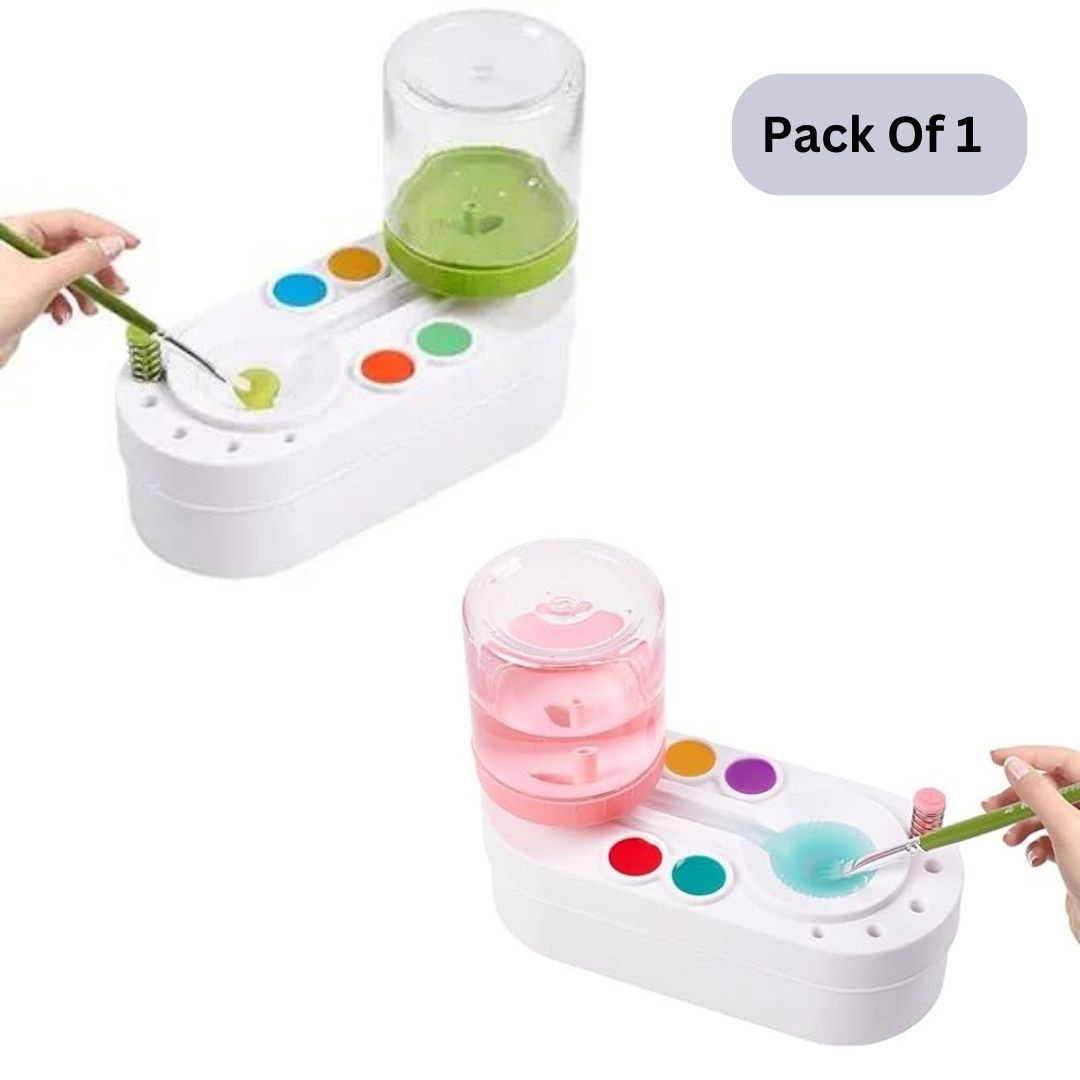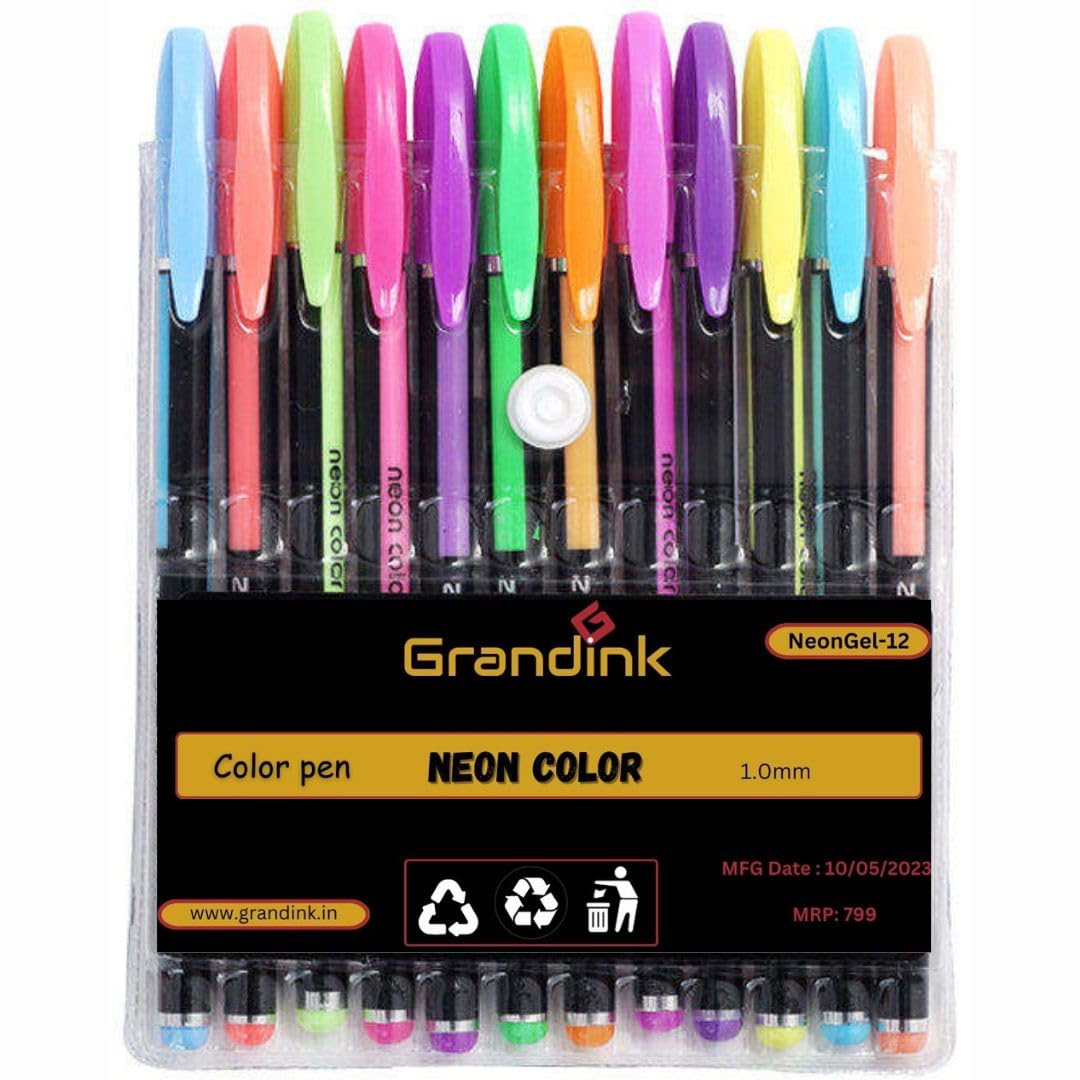Express Your Art With Grandink

Grandink Stainless Steel Painting Knives – Set of 5 !!
- The primary use is to Mix Colors. Also Excellent for Thick Painting Techniques. Apply Paints and Pigments Directly on the Canvas.
- Great product for Professional Artists, sculptors, and hobbyists. Great Replacement for Steel Painting Knives.
- Ideal to add texture and body to acrylic and oil paints. Safer to use than metal knives, these one-piece molded plastic knives are also economical, durable, and easy to clean.
- 5 Assorted painting and palette knives, 3 cranked handles, and 2 flat. Made from a strong and flexible, stainless steel
 |
 |
 |
 |
 |
|
|---|---|---|---|---|---|
| No1. Angle Trowel | No2. Angle Spade | No3. Angle Spreader | No4. Long Blade | No5. Long Blade | |
| Knife Number And Uses | No1. Angle Trowel | No2. Angle Spade | No3. Angle Spreader | No4. Long Blade | No5. Long Blade |
Grandink Art Palette Are A Boon For Oil Painting

With a Grandink palette knife, artists can cover their surface much more quickly than with a brush. Scoop up some paint with the knife and spread it across the surface to cover the white of the canvas. Get a large, flat palette knife to speed up your painting process.
Another advantage to painting with a palette knife is that artists can achieve thick texture on the canvas. By using viscous mediums that hold their shape, painters can create three-dimensional-looking peaks.
Palette knives are cheap, often cheaper than quality stiff oil painting brushes, they’re easy to clean and last longer. To clean a palette knife, all you have to do is wipe paint from the knife with a paper towel. Brushes can degrade over time, especially if you wash them in solvents. However, palette knives will stand the test of time.
Palette knives are a multi-purpose tool. It’s likely that if you work with acrylics or oil paints you own a few palette knives already. You can also use them for mixing colors on the palette.
How to Use A Palette Knife
 |
 |
 |
|---|---|---|
Load up the knife with paintWhether you want to add paint to the canvas directly or bring colors into the center of the palette to mix them, you’ll follow the same technique. Use the flat, straight edge of the knife to scrape up a blob of paint from the perimeter of the palette. Place it down at the desired spot using a wiping motion.
|
Blend paint colors together on the palette using the knife.Load up the knife with a single color and place it onto a clean spot near the center of the palette. Wipe off the knife with a paper towel or rag and then pick up another color. Add the new color to the same spot. Use the bottom or top of the blade to manipulate and combine the paints. Work in circular or seesaw motions to mix the colors, continuously applying downward pressure.
|
Angle the knife on the canvas to create different textures.Use the flat base of the knife to drag the color across the canvas. Try pushing paint at a 45-degree angle for more texture. Flick the knife upwards at the end of the gesture to create a 3-dimensional peak. Or you can twist the knife in an undulating wave gesture to create irregular textures. |
 |
 |
 |
|---|---|---|
Point the knife in different directions to create visual movement.The most comfortable position may be holding the Grandink knife at a 45-degree angle in relation to your body. But try holding it perpendicular to your body to create vertical lines. Rotate your wrist as you apply paint to the canvas to create swirls. Try layering a series of shorter strokes on different angles to add dimension to your painting.
|
Pick up multiple colors at a time to create partially blended strokes.Instead of completely mixing 2 or more shades together on the palette, load up the knife with a few colors and put them down onto the canvas. Use a variety of gestures and angles to spread these colors out and swirl them together.
|
Keep Mix And Match till you receive the Results of Your ChoiceGive a Finishing Touch to your Creation |















![easel for painting best easel for artists adjustable easel wooden easel tabletop easel portable easel canvas for painting best canvas for acrylic painting stretched canvas pre-stretched canvas canvas panels canvas rolls artist easel metal easel canvas boards canvas for oil painting easel stand for painting easel for large canvases mini easel art easel for kids professional easel easel for watercolor art supplies near me art supplies store buy easel online best canvas for oil painting canvas for watercolor painting easel for small paintings drawing easel adjustable canvas easel oil painting canvas acrylic painting canvas canvas for beginners art easel for home studio cheap easel for painting best easel for plein air canvases for artists large stretched canvas canvas for fine art easel set canvas display boards easel for digital artists multi-position easel canvas for mixed media canvas with frame grand easel for exhibitions painting easel for canvas canvas for abstract painting canvas painting supplies art easel display Grandink easel for artists Adjustable easel for painting Wooden tabletop easel Grandink portable easel Studio easel for large canvases Lightweight art easel Tabletop easel for sketching Adjustable canvas easel Grandink professional easel Portable easel for outdoor painting Artist wooden easel for large paintings Grandink easel stand for canvas Multi-position easel for artists Grandink painting easel Heavy-duty wooden easel Compact easel for small canvases Grandink sketching easel Easel for acrylic painting High-quality art easel for professionals Grandink canvas easel Metal easel for outdoor painting Adjustable easel for sketching and drawing Grandink easel for oil painting Wooden art easel for large artworks Travel easel for plein air painting Artist easel with adjustable height Grandink easel for home studios Portable easel with adjustable tilt Grandink lightweight easel for easy transport Wooden floor easel for canvas painting Grandink easel for watercolor art Folding easel for painting Grandink easel with adjustable legs Double canvas easel for artists Grandink painting easel with tilt function Luxury easel for art exhibitions Grandink tabletop easel for drawing and painting Multi-functional easel for mixed media Easel for large art pieces Grandink premium wooden easel Canvas easel with tripod stand Grandink easel for plein air and outdoor art Durable easel for acrylic and oil paints Grandink mini easel for small canvas artwork Wooden studio easel for professional artists Grandink easel for oil painting in large sizes Grandink easel for art exhibitions and events Adjustable height easel for all art projects Grandink easel for sketching and painting outdoors Grandink easel for quick setup and display Grandink stretched canvas for artists Pre-stretched canvas for painting Premium canvas board for oil and acrylic Grandink canvas for oil painting High-quality canvas for watercolor artists Grandink canvas for professional painters Stretched canvas for acrylic paints Grandink canvas panel for painting Premium canvas roll for custom art projects Grandink pre-stretched canvas boards Artist-grade canvas for oil painting Grandink canvas for large art pieces High-density cotton canvas for painting Grandink stretched canvas for beginners Artist canvas board for oil and acrylic Grandink stretched canvas for detailed artwork Blank canvas for acrylic painting Grandink canvas for mixed media artwork Unprimed canvas for professional use Grandink premium canvas rolls for custom sizes Canvas board for oil and acrylic paintings Grandink stretch canvas for traditional art Pre-stretched canvas for easy painting Grandink 12x16 stretched canvas High-quality linen canvas for artists Grandink cotton canvas roll for art projects Stretched canvas for custom painting sizes Grandink canvas board for detailed work Multi-surface canvas for oil, acrylic, and watercolor Grandink stretched canvas for textured artwork Medium-weight canvas for fine art Grandink linen canvas for superior paint adhesion Canvas boards for sketching and painting Grandink professional canvas rolls for large projects Stretched canvas for fine art painters Grandink pre-primed canvas High-quality gallery wrapped canvas Grandink canvas for framing Custom-sized canvas roll for artists Grandink canvas for high-end art projects Pre-primed cotton canvas for professional use Stretched canvas for oil and acrylic paintings Grandink multi-texture canvas for varied mediums Fine canvas board for detailed acrylic work Grandink canvas roll for mixed media Stretched canvas for frame-ready paintings Canvas board for acrylic and watercolor artists Grandink deep edge canvas for larger artwork Grandink canvas boards for versatile art Canvas pack for beginners and professional artists Art supply stores near me Art supplies for students Professional art supply stores Best art supply brands Cheap art supplies online Artist supplies for beginners Premium art supplies for professionals Art supplies for mixed media Best watercolor paper High-quality sketchbooks Canvas for oil painting Stretched canvas for acrylic paints Canvas boards for mixed media Pre-stretched canvas for easy use Multi-surface art boards Art easels for home studio Adjustable easels for painting Travel easels for outdoor art Art supply kits for kids Drawing pencils for beginners Colored pencils for artists Charcoal for fine art Pastel sets for art students Graphite pencils for sketching Markers for watercolor Art knives for precise cutting Watercolor paper blocks Oil painting palettes Paint palette knives for mixing Art smocks for kids Portable art supply cases Custom-sized sketchbooks for artists Best canvas rolls for professional artists Drawing pads for professionals Framing supplies for art Watercolor brush sets Oil painting solvents and mediums Drawing stencils for beginners Art masking tape for clean edges Acrylic paint markers for details Pastel pencils for smooth gradients Art repair kits for frames Easels for large canvases Art brushes for body painting Paper for printmaking High-quality paper for watercolor Calligraphy pens and inks Art display stands for exhibitions Art printing supplies Palette cups for mixing colors Oil painting brushes for glazing Acrylic mediums for texture and finish Digital art supplies Art mats for framing Foam brushes for quick coverage Craft glue for mixed media projects Acrylic varnish for art protection Gesso for priming surfaces Art portfolios for storing artwork Framing tape for art Collage supplies for artists Painting aprons for artists Adjustable art lights for studio use Art modeling compounds for sculpture Sumi-e ink and brushes for Asian painting Printmaking ink for etching Markers for canvas art Airbrush kits for detailed work Screen printing supplies for artists Stamps and ink pads for art projects [12:01 pm, 7/2/2025] Shweta Bhanushali: Best acrylic paint brands Professional oil paints Watercolor paint brands Best paints for beginners Top-rated acrylic paints for artists High-quality oil paints for professionals Professional-grade watercolor paints Pigment-rich acrylic colors Artist oil paint colors Best watercolor paints for detail work Oil painting sets for artists Watercolor paints for beginners Acrylic paint sets for students Watercolor paint sets for kids Non-toxic paint colors Paint colors for canvas painting Custom color mixing paints Pastel oil paints for smooth strokes Water-based oil paints Vibrant acrylic paint colors Paint sets for classroom use Affordable acrylic paints Best watercolor tubes Heavy-body acrylic paints Acrylic paint markers Fluid acrylics for smooth coverage Watercolor paint pencils Artist-grade oil paint tubes Acrylic paint for canvas Watercolor paint for large washes Watercolor tubes for professional use Acrylic paint for outdoor projects High-pigment watercolor sets Chalk pastel paints Watercolor brush pens Natural earth-tone paints Multi-surface paint colors Paint for fabric and textiles Metallic acrylic paint colors Transparent watercolor paints Varnish for acrylic painting Oil-based colors for mixed media Paint sets for kids' crafts Ready-to-use acrylic paint tubes Pre-mixed colors for convenience Customizable watercolor sets Transparent oil paints High-quality liquid acrylics Ready-made oil colors for artists Premium watercolors for intricate work Non-toxic paints for crafts Paint colors for fine art Paint tubes for beginner artists Refillable paint markers Non-drip acrylic paints Natural pigments for watercolors Watercolor tubes for professionals Palette for mixing colors Pigment powder for painting Acrylic inks for mixed media [12:01 pm, 7/2/2025] Shweta Bhanushali: Best paint brushes for artists Professional paint brushes Acrylic paint brushes Oil paint brushes Watercolor paint brushes Sable brushes for painting Synthetic paint brushes Round paint brushes Flat paint brushes Filbert paint brushes Detail brushes for painting Large paint brushes Small brushes for fine details Paint brush sets for artists Brush set for beginners Best brushes for watercolor Detail brushes for oil painting Brush for blending paint Dry brush for texture painting Best brushes for acrylic pouring Best brushes for oil glazing Brushes for textured painting Brushes for underpainting High-quality artist brushes Art brushes for canvas Artist brushes for mixed media Best paint brushes for beginners Watercolor brushes for beginners High-end brushes for oil artists Flat and round brushes for acrylics Filbert brush for smooth strokes Sable vs synthetic brushes Best brushes for large canvases Fine detail brushes for miniature painting Brushes for watercolor washes Brushes for oil-based mediums Wash brushes for larger areas Detail liners for intricate designs Brushes for calligraphy Brush sets for kids Brushes for sketching Travel brushes for plein air painting Paint brush cleaning tools Reusable paint brushes for artists Easy-to-clean artist brushes Eco-friendly paint brushes Affordable brushes for students High-performance brushes for professionals Brushes for impasto technique Blending brushes for acrylic painting Watercolor round brushes Brushes for portrait painting Brushes for landscape art Paint brushes for abstract art](https://grandink.in/wp-content/uploads/2025/01/20250123_103904-removebg-preview-e1737892909159.png)
Array ( [width] => 207 [height] => 407 [file] => 2023/05/006.png [filesize] => 130074 [sizes] => Array ( [woocommerce_gallery_thumbnail] => Array ( [file] => 006-100x100.png [width] => 100 [height] => 100 [mime-type] => image/png [filesize] => 16492 ) [medium] => Array ( [file] => 006-153x300.png [width] => 153 [height] => 300 [mime-type] => image/png [filesize] => 51083 ) [thumbnail] => Array ( [file] => 006-150x150.png [width] => 150 [height] => 150 [mime-type] => image/png [filesize] => 32055 ) ) [image_meta] => Array ( [aperture] => 0 [credit] => [camera] => [caption] => [created_timestamp] => 0 [copyright] => [focal_length] => 0 [iso] => 0 [shutter_speed] => 0 [title] => [orientation] => 0 [keywords] => Array ( ) ) )Array ( [width] => 539 [height] => 331 [file] => 2023/05/005.png [filesize] => 162873 [sizes] => Array ( [woocommerce_gallery_thumbnail] => Array ( [file] => 005-100x100.png [width] => 100 [height] => 100 [mime-type] => image/png [filesize] => 13729 ) [woocommerce_single] => Array ( [file] => 005-400x246.png [width] => 400 [height] => 246 [mime-type] => image/png [filesize] => 73219 ) [medium] => Array ( [file] => 005-300x184.png [width] => 300 [height] => 184 [mime-type] => image/png [filesize] => 46197 ) [thumbnail] => Array ( [file] => 005-150x150.png [width] => 150 [height] => 150 [mime-type] => image/png [filesize] => 26046 ) [wcpr-photo-reviews] => Array ( [file] => 005-500x307.png [width] => 500 [height] => 307 [mime-type] => image/png [filesize] => 102074 ) ) [image_meta] => Array ( [aperture] => 0 [credit] => [camera] => [caption] => [created_timestamp] => 0 [copyright] => [focal_length] => 0 [iso] => 0 [shutter_speed] => 0 [title] => [orientation] => 0 [keywords] => Array ( ) ) )